Here’s the thing: We previously ran the exact same study for Wix and it did well. So we decided to replicate it for Squarespace.
Quite innocuous, right? Turns out it wasn’t. Someone shared the takeaways from that post on Reddit and boy, was the criticism full on.
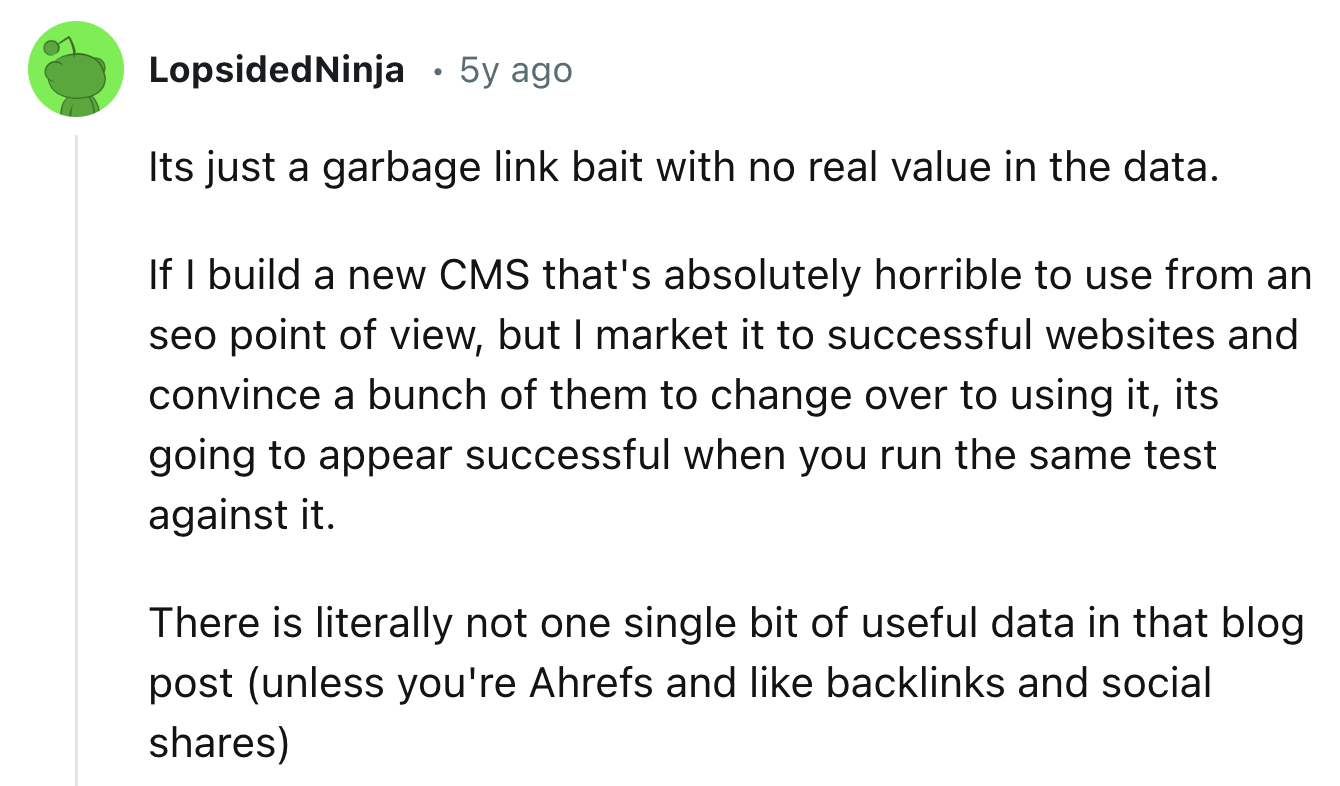


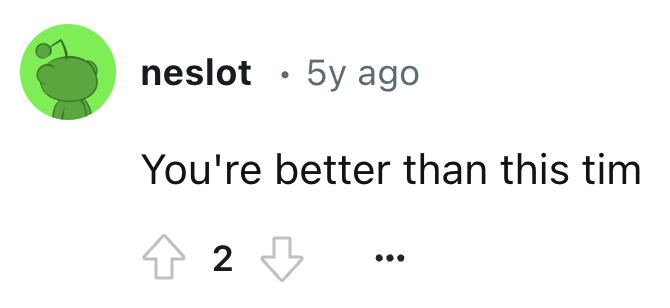

Call me thin-skinned, but I remember feeling hurt. It was my first ever ‘research’ article, after all. And it was as safe a research study as possible. But reality is often harsher than you’d imagine.
Criticism doesn’t diminish. Five years later, I still see the same about the studies I publish:
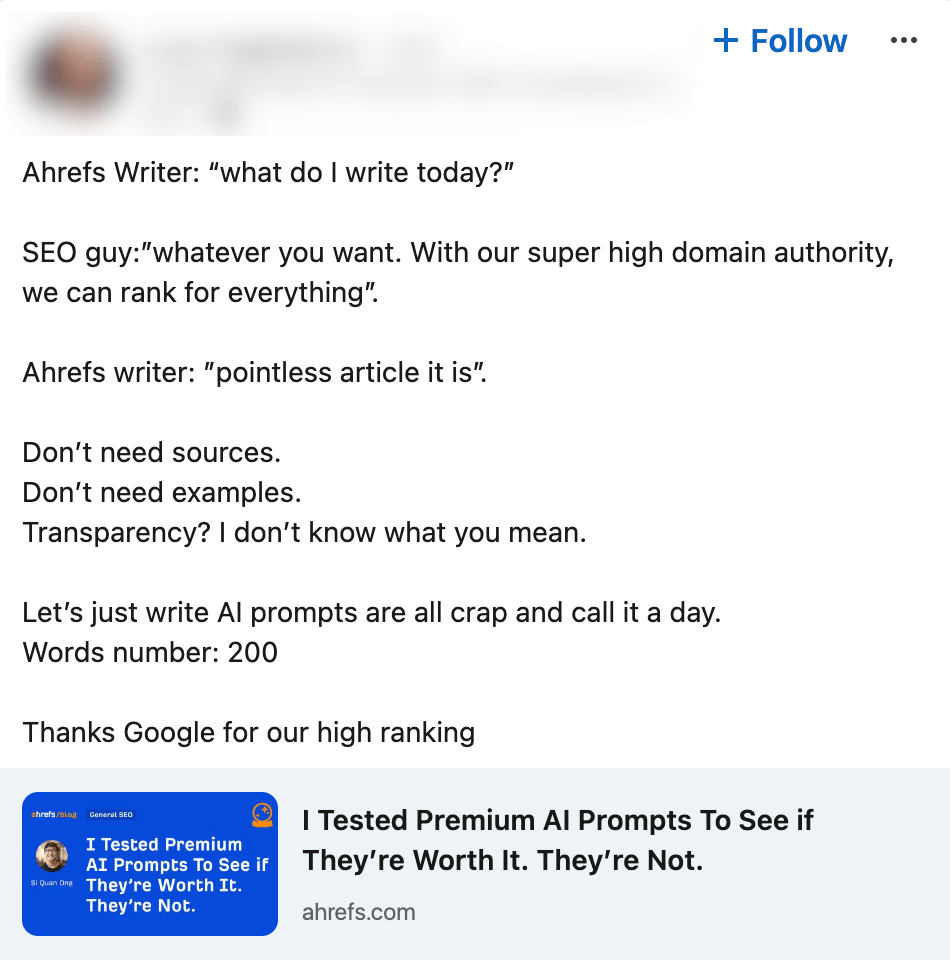



The reason why I’m telling these stories is because making thought leadership content—studies, opinions, experiments—can be scary. Criticism will come hard and fast. You’ll put yourself out there and can expect to receive ‘hate’.
I’d admit that’s one reason why I (used to) love making SEO content. Use a couple of SEO tools, pop in the necessary H2s (What is X? Why is X important? How to do X?), and fill in the blanks. No opinion required. Publish a post and tuck yourself in bed, warm and cozy.
But it’s only a matter of time that it won’t work anymore. We’ve avoided years of controversy as content marketers by shuffling ideas around. Content curation is safe because it can’t offend anyone. But generative AI can do that regurgitation now. And it can do that better than all of us… and at scale too.
If we want to stand out in our careers and help the companies we work for differentiate from others, we need to embrace creating thought leadership content. Sharing lived experiences, professing strong opinions, and gaining and using our hard-earned expertise.
Doing that first requires us to overcome that fear of putting ourselves out there.
“The best art divides the audience, where if you put out a record, and half the people who hear it absolutely love it, and half the people who hear it absolutely hate it, you’ve done well because it’s pushing that boundary. If everyone thinks, oh that’s pretty good, why bother making it? It doesn’t mean as much.”
The brutal truth about making thought leadership content is that you’ll overestimate yourself. Most of the time, no one cares.
So, if you published something that other people actually took the time to criticize, it means you did a good job. You pushed the boundaries and challenged the industry’s assumptions. You made people think.
It’s a mindset shift. You don’t need to fear criticism anymore. It can still hurt of course, but take pride in the fact that you’ve made people notice.
But don’t take this to say you should intentionally poke bears. Your goal is not to say something controversial “for the attention”. Don’t ragebait and don’t rile people up. That’s not helpful and it’s not thought leadership content.
You should share your genuine opinions based on your expertise or experience. Sometimes, this polarises because it differs from everyone else’s. But you’ll be surprised how many people were thinking about it.
For example, I was a little hesitant to publish my opinion about entity SEO. After all, who am I to talk about it? But I plucked up my courage. Turns out: There are people who agree!
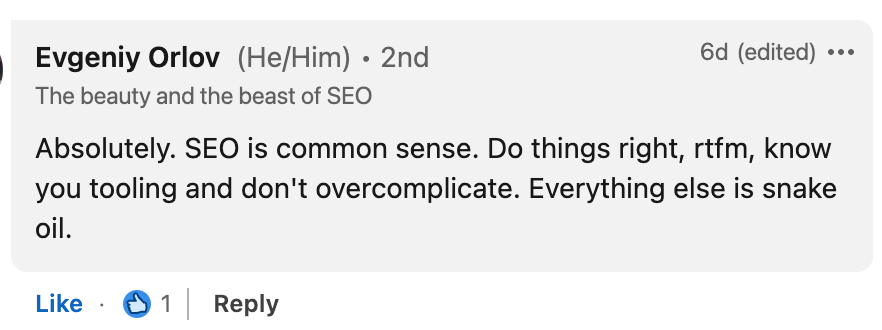

That would damage the SEO and content marketing industry:
- More AI content means poorer search results and quality. Everyone is worse off for it.
- AI content is mediocre and will likely lead to inferior content marketing ROI. Low ROI means less investment from stakeholders, affecting the industry.
I’m not saying Ryan is that influential. (He might be, though.) But if he could change the minds of one, ten, or even a hundred people—that’s a big impact. He helped everyone do things better and improved the industry as a whole.
Imagine that was you, but out of fear, you neglected to share your opinion on the right ways to do something in your industry. Now, everyone in your industry will continue to chug along the wrong path without any improvements. You did everyone a disservice.
But what if you did the opposite and shared your opinion? You could positively impact everyone in your industry.
Scientists publish their results or opinions in publications. Other scientists can read, debate, and *gasp*, criticize it. That’s the nature of science and it’s how science progresses.
You can think of your thought leadership content as the same. You can’t sharpen your thinking if it stays in your head. Publishing the ideas that come from your observations, lived experience, experiments, or expertise allows others to poke holes in your logic or strengthen your arguments.
For example, when I published my opinion on entity SEO, I got experienced SEOs disagreeing with my take:
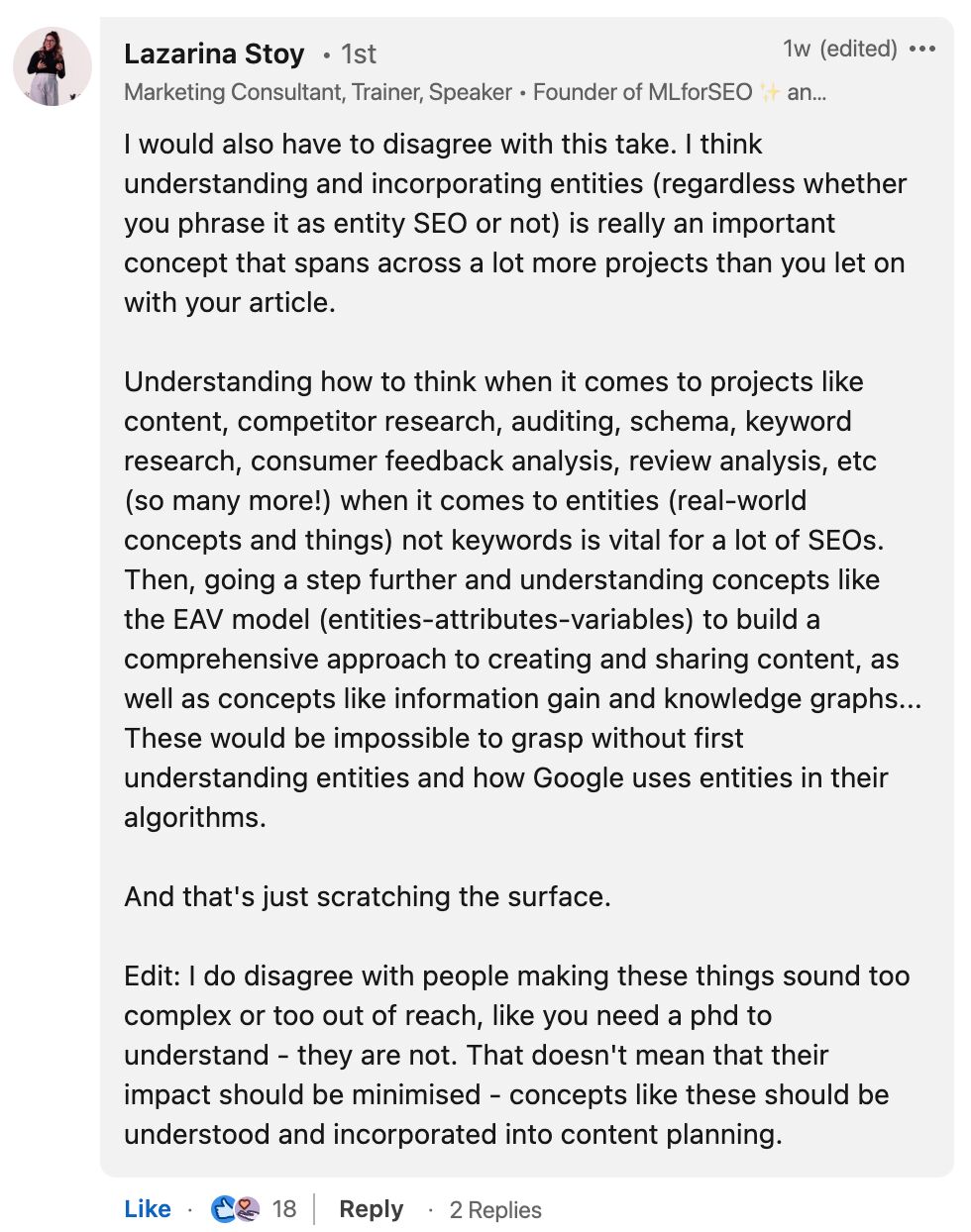

And that is awesome! I ended up learning so much more about the topic. That wouldn’t have been possible if I didn’t hit publish.
I didn’t know anything about the entities-attributes-variables (EAV) model previously, but now I have a lead to investigate further. I could even hop on a call with Lazarina to learn more. I might even change my mind about the whole thing!
And who knows, I might end up writing an entirely new article about how entity SEO is the future.
One reason you might be afraid of publishing thought leadership content is because you’re unsure if your logic is sound or your arguments watertight.
If that’s your concern, then steelman your arguments before publishing. Steelmanning is the practice of addressing the strongest form of your “opponent’s” argument. If you can argue against the steelman, your position will be stronger.
In fact, it was the advice Ryan gave me before I started drafting my “entity SEO” post:
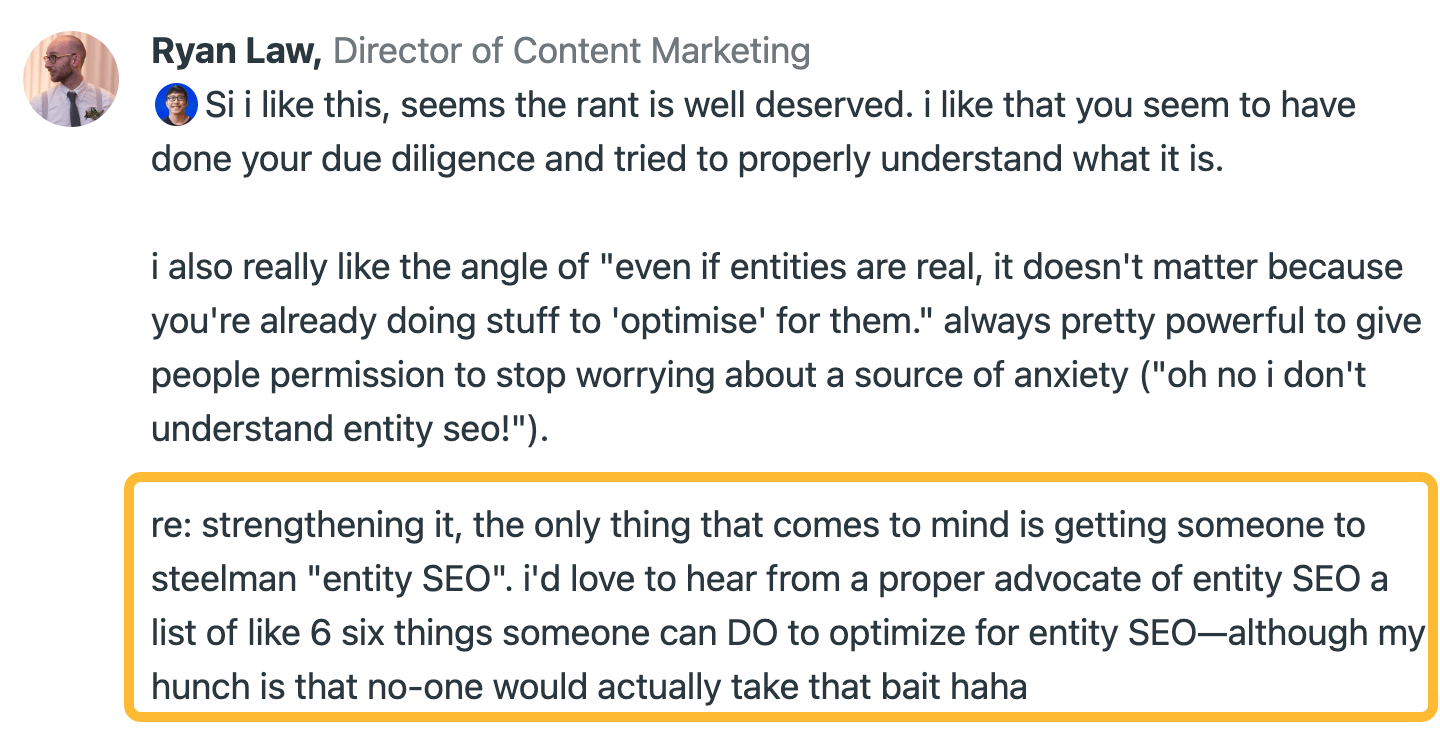

That’s what I did. Before I wrote anything, I hopped on a call with my colleague Louise to discuss if my “opinion” had merit:


Then, after I had drafted the outline, I asked my colleague Despina to review it:


Doing all of that gave me confidence that my opinion was worth publishing.
Every quarter, Tim Ferriss runs an exercise he calls “fear-setting”. The basic idea is to define your fears in writing.
Here’s the question he uses:
“Define your nightmare, the absolute worst that could happen if you did what you are considering. What doubt, fears, and “what-ifs” pop up as you consider the big changes you can—or need—to make? Envision them in painstaking detail. Would it be the end of your life? What would be the permanent impact, if any, on a scale of 1–10? Are these things really permanent? How likely do you think it is that they would actually happen?”
What’s the worst that could happen? Someone already said my work was no better than a second-grade kid. But I’m still here, publishing thought leadership content and sharing my opinion.
Often, you’ll find that there’s nothing really worth worrying about.
Respond to existing ideas by using “yes, and”
Thought leadership content doesn’t always mean contradicting the mainstream. You can also help signal boost other people’s ideas.
In his thought leadership content course, Ryan suggests overcoming the fear of thought leadership by responding to an existing idea. You’d want to collect opinions you agree with from forums or social media, and then add additional ideas to the discussion. For example, you could show how to execute the strategy, elaborate on the idea, or reveal that it’s related to another idea.
I used “yes, and” when I wrote my post on white hat link building. Instead of compiling every potential link-building tactic, I ‘responded’ to an existing idea by showing how to execute the ones featured in an industry-wide survey.


Final thoughts
Each piece of published thought leadership content makes the next one easier—but only slightly. I still hesitate every time I write a piece, knowing I could be judged, criticized, or ridiculed.
But as Tim Ferriss writes,
“A person’s success in life can be measured by the number of uncomfortable conversations he or she is willing to have.”
This uncomfortable conversation could be one with your inner fear. Or it could be one with other professionals who will comment on your work. But if you can overcome all of that, it will only serve you better.


